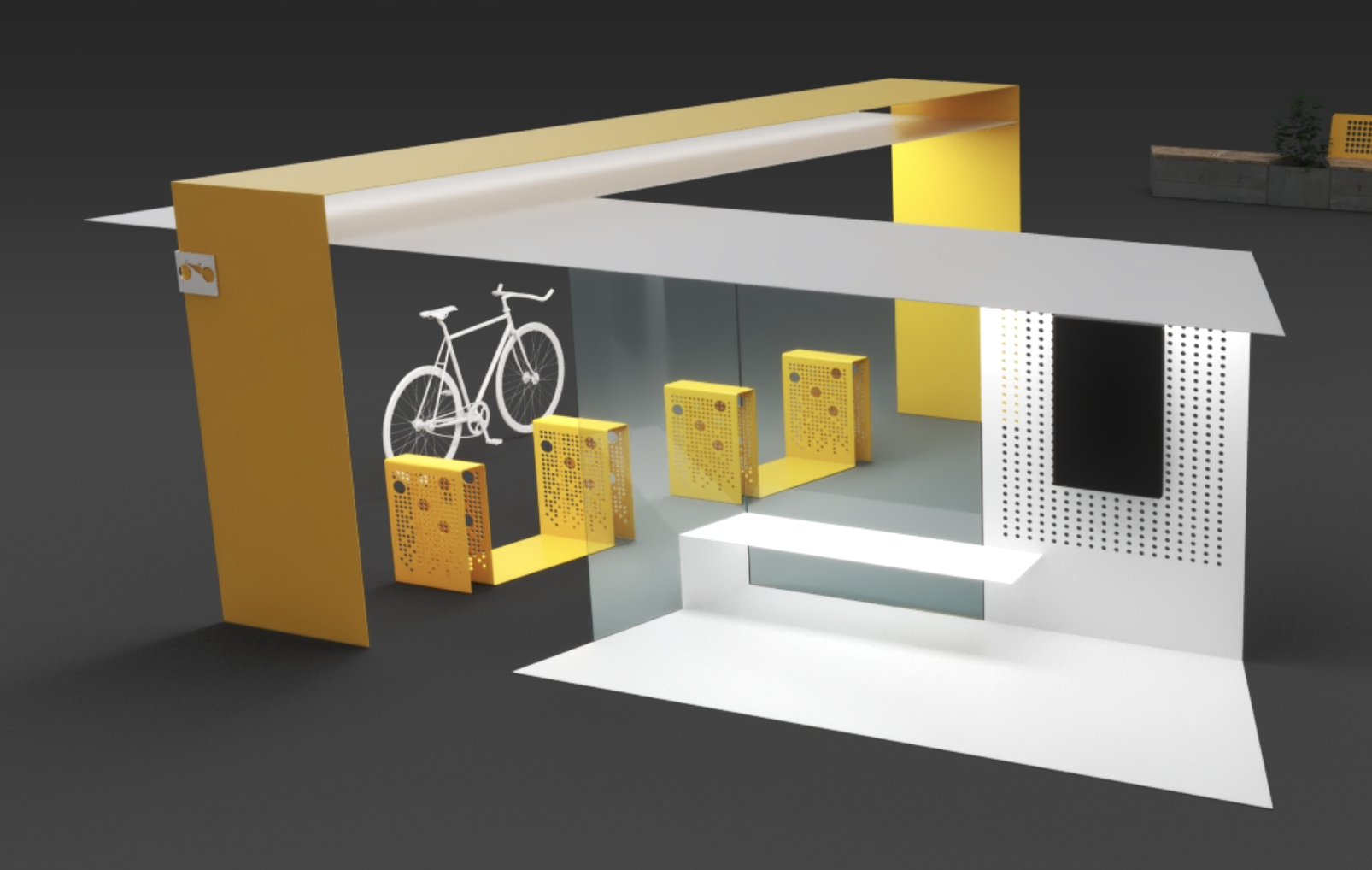This solution converts junctions where different modes of transport - bicycle, car, bus, train, etc. - converge into coherent and practical landmarks.
A mobility junction is a place where different modes of transport converge. It enables people to easily switch from bicycle to car, from train to bus etc. The mobility junctions support and promote multimodal transport, which is an absolute necessity if we want to avoid traffic jams and related problems. Mobility junctions are also a way to make the public space more attractive: for instance, facilities for shared cars means less need of parking space elsewhere.
However, mobility junctions currently have a major impact, both physically and visually. They often appear to be chaotic due to the many different modes of transport that converge. They also require a lot of practical follow-up by the city or town. Furthermore, they are often fixed installations that cannot easily be adapted to new trends (e.g. bicycle parking stations that have to accommodate an increasing number of cargo bikes or electric bikes).
During the discussion to define the challenge, the same three key elements were repeatedly brought up: the ideal mobility junction must be movable or extendable, be clearly distinguishable and increase comfort.

This ideal seems obvious but in fact, it’s not that easy to accomplish. Especially if you try it on your own. That’s why Leiedal and design agency Yellow Window consulted with several cities and towns.
For Robin De Beelde of Yellow Window, this was an absolute plus: “We have a lot of expertise in the field of mobility and transport design. But the technical experience of enterprises shows us what can actually be accomplished in practice. And the cooperation with the cities and towns gives us an insight into the local policy and the elements that are important to them. At the same time, we receive a wealth of information about very specific locations and the associated needs.”
These needs can be very diverse, confirms Aurelie Van Obbergen of Leiedal: “All cities and towns are confronted with challenges in the field of mobility. The pressure on public space increases, but that space is not infinite. This is quite a challenge, but it is one that the cities and towns intend to tackle head on. For instance, we work together on a regional mobility plan. It was great to witness the enthusiasm for the project relating to the mobility junctions. The participants invested a lot of time and energy from the start, although the initial ideas were very vague. Thanks to the diversity of the participating cities and towns in terms of size, demographics and modes of transport, we gained a better insight into the often widely varying local needs. We then worked from the bottom up to develop a scalable concept.”
The term “scalable” does not mean one product that can easily be made thousands of times, explains Robin De Beelde: “We looked for a solution that takes into account the broader context and can at the same time be adjusted to one specific location. As a matter of fact, not only the locations are very diverse. Mobility itself is continuously evolving. As cities and towns currently find themselves constrained by permanent installations, we want to be able to offer them more flexibility."
Aurelie Van Obbergen also stresses the importance of flexibility: “When major works are executed in the public space, we often notice that certain areas are not used for a long period of time pending a beautiful permanent design. But in the meantime, these areas deteriorate and the mobility issues are not solved. A mobile mobility junction provides the possibility to experiment in a high-quality manner. It offers cities and towns the opportunity to thoroughly test solutions before literally embedding them.”
Robin De Beelde, Yellow Window

Consequently, the result of the cocreation process is a system rather than a product. Thanks to the smart design and the production method, this solution is unique and scalable. A combination of a comfortable bus stop and a bicycle rack for three bicycles? No problem. Facilities for shared cars witch charging stations, combined with a large bicycle parking station? That’s possible as well.
In addition, the design is very attractive, making it easier to encourage local residents and visitors to opt for sustainable modes of transport.






